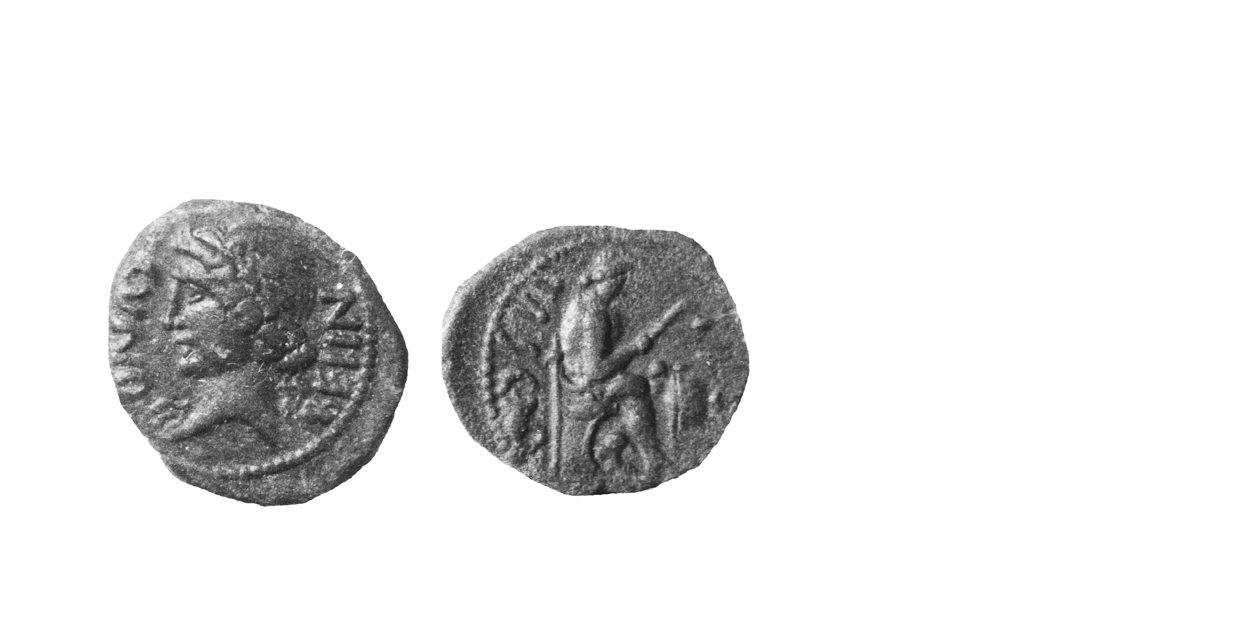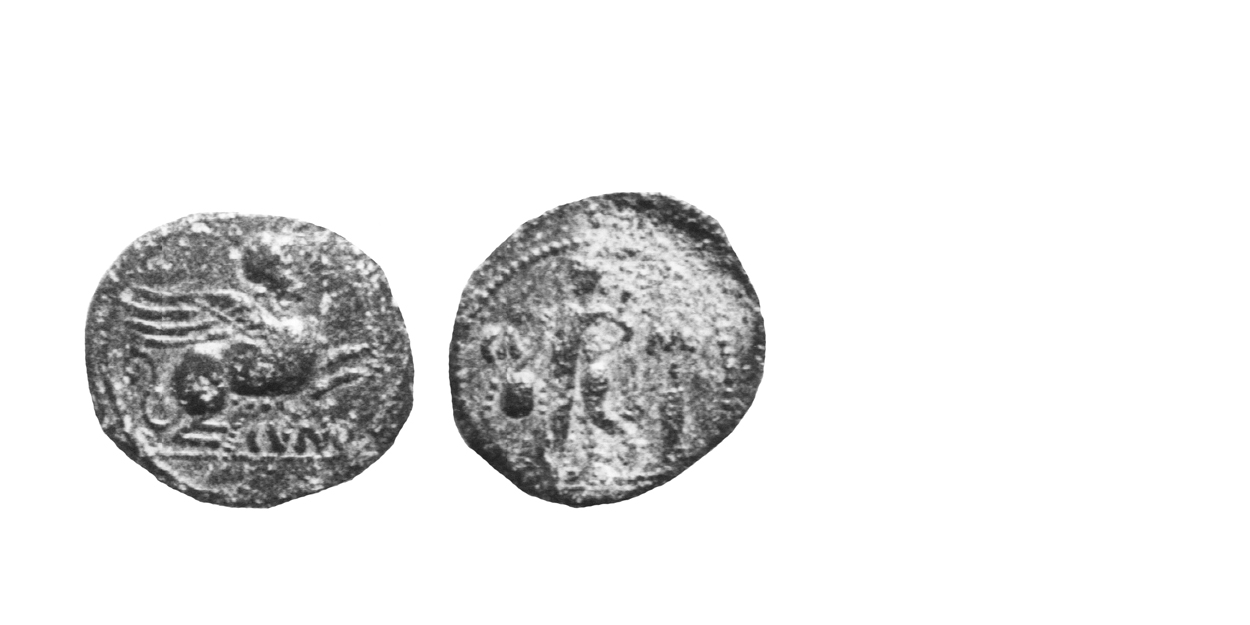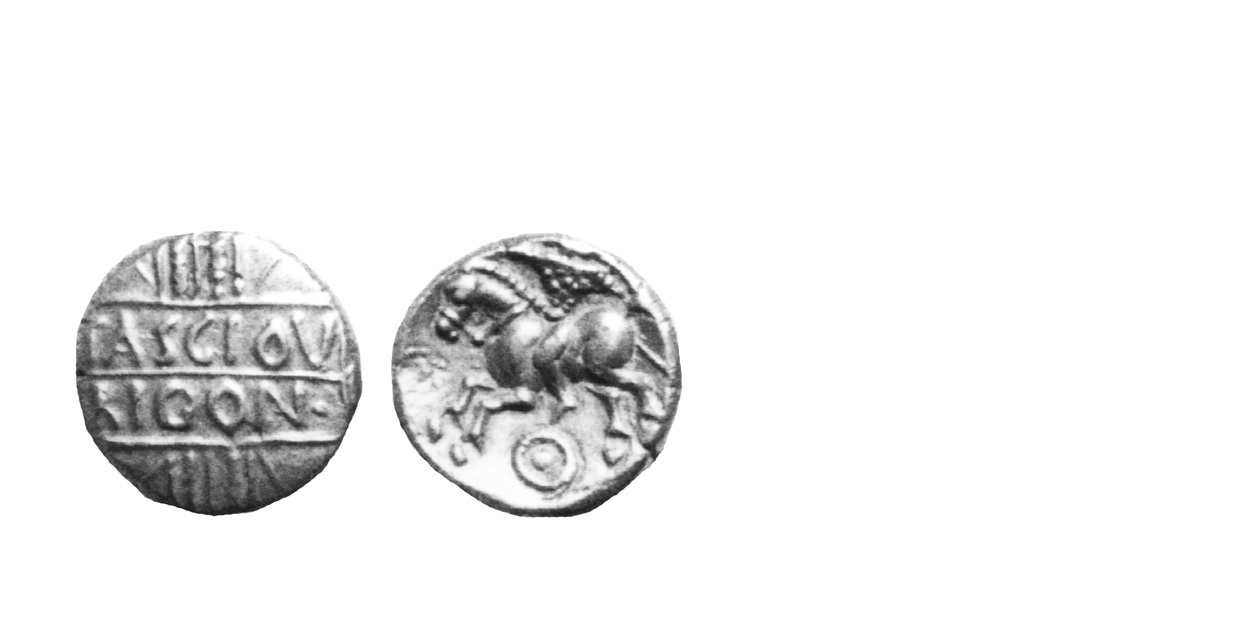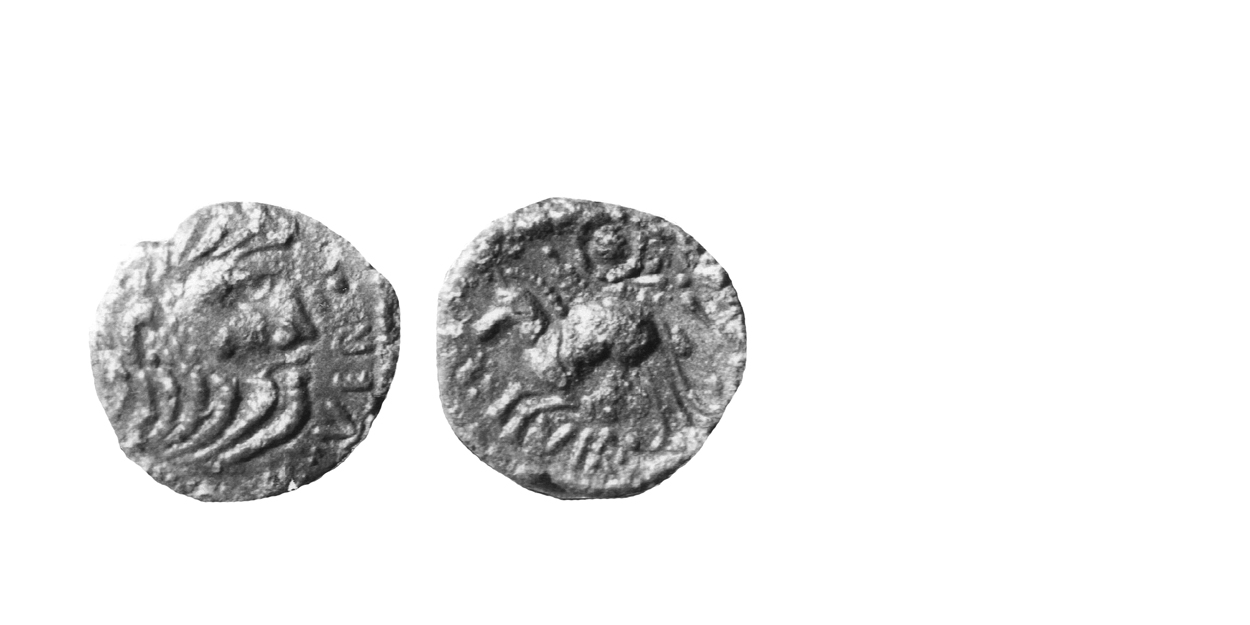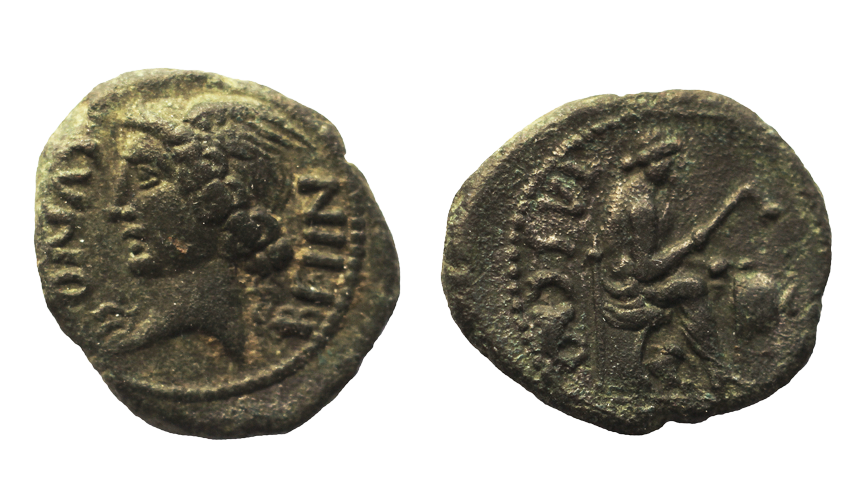
About the Coins
Art (Info)
Scenes from Celtic Life
The die-cutters definitely portray scenes from Celtic life (95), but these are usually difficult to detect because they are rendered in the abstract style. The earliest identified examples, post Gallic War, occur during the reign of Tasciovanus. One stater depicts a mounted warrior brandishing a carnyx (war-trumpet). Details on the coin are significant; perhaps the most important is the fact the rider wears chain-mail armour. Although Tacitus, writing a hundred years later, indicated the Celts were unfamiliar with chain-mail, Strabo states otherwise. The stater shows Strabo was correct and the testimony of the coin is confirmed by modern finds of such armour in Celtic graves.
Other coins show helmets, spears, swords, shields, horse fittings and even warriors riding naked, all providing additional information about Celtic warriors, their tactics, appearance and equipment.
Abstract portraits of men give some evidence about the way Celtic men looked. Beards, mustaches and long wavy hair are all in evidence. The figures are all muscular and athletic. Surprisingly, despite the relative equality of the sexes in Celtic society compared to the Classical world, women are difficult to detect on British coins, unless adapted from Classical sources. It is possible some of the beardless portraits portray women, but it would be stretching the imagination to single out an example.
Scenes from Celtic Mythology
Although the Celts could have created images embodying religious themes, or portrayed creatures from their imaginative mythological storehouse, such examples are actually elusive. Part of the problem is our modern understanding of Celtic mythology and religion is drawn from evidence post-dating the period of the coins. Most of what is known about the mythology is drawn from the writings of Irish churchmen starting about the Sixth Century A.D. However, the majority of the Irish sources date much later, at least a thousand years after the period of interest.
Celtic religious practices may be deduced from votive statues known from the pre-Roman period, but these are commonly analyzed in unison with a much larger assortment of objects dating from the Romano-British period. The Roman objects used for comparison date as much as four hundred years after the coins.
The result is our understanding of pre-Roman Celtic religion and mythology is irretrievably coloured – the interpretation of the votive statuary by influences emanating from the Roman objects, and the analysis of the Irish manuscripts by a thousand years' evolution in the oral tradition.
Some simple themes are known, however, which must be apropos to the coin-issuing period. The veneration of the human head as the seat of the human spirit is so widespread it cannot be ignored. That the Celts treasured the heads of ancestors and slain adversaries is well-established, and carefully buried groups of skulls are known from Celtic sites in Britain, Danebury for one. However, it is wrong to think every head appearing on a Celtic coin is a severed one. The heads floating in the fields of Armorican coins may be examples, but conclusive British ones are hard to come by. The famous Cunobeline bronze depicting a male figure holding a severed human head is more likely to be an adaptation of a Classical theme Perseus carrying the head of Medusa than a Druid carrying out a human sacrifice.
Various animals were venerated, some as gods. Epona, the horse goddess is probably the best-known, and most Celtic coins have horses. Whether these had religious meaning to the viewer, is a matter of pure speculation. The boar, wolf, stag and birds all appear in Celtic mythology, and most appear on the coins as well. Again, whether these images had religious significance is difficult to prove, though they may have, and the coins could have had a purpose ancillary to that of commerce.
Enormous numbers of coins normally turn up at pre-Roman temple sites, such as Harlow, Wanborough, and Sheepen. Indeed, Sheepen appears to be the site of Cunobeline's mint (96). However, temple sites also served other functions, such as market-places, and coin-loss at trading sites would be rife. Alternatively, the finds of coins at these sites may represent religious offerings. Thus, although the occurrence of coins at religious sites may indicate the coins carried religious images, there is no real proof.
Next Section – Appreciating Celtic coins

